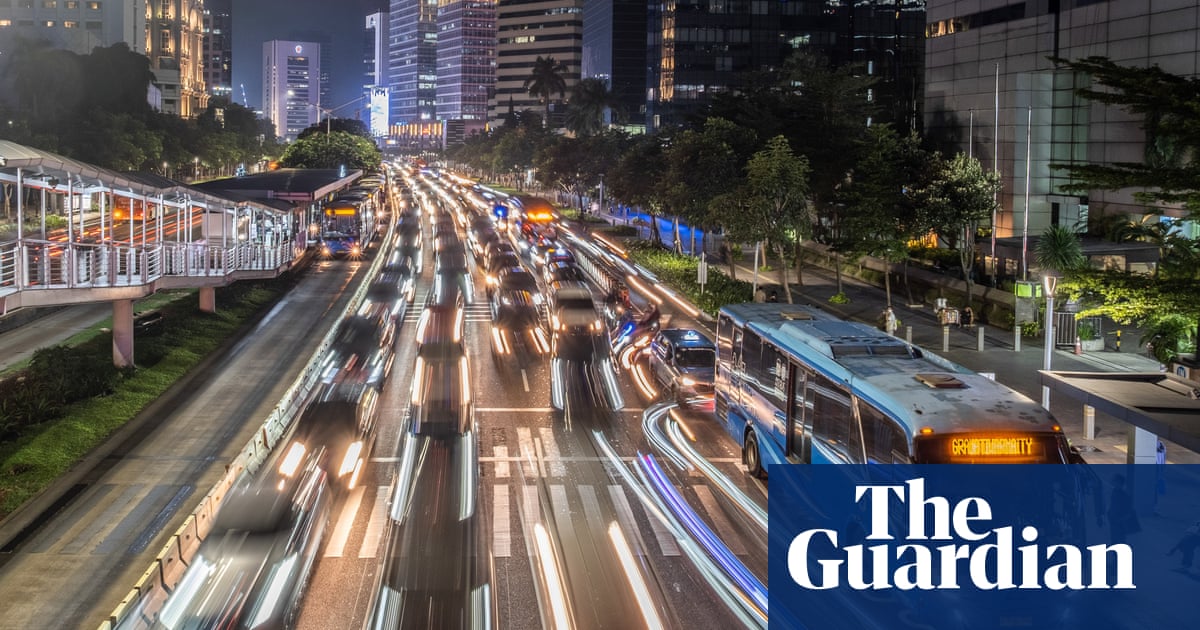
In 2004, Ananda Putra Fajar, or Nanda to his family, was among those trying out Jakarta’s newly launched first bus fleet. Jakarta had long been infamous for its traffic congestion and air pollution, and in the search for a solution it had turned to Colombia’s capital, Bogotá, which had developed a system called Bus Rapid Transit, or BRT, a kind of high-concept bus network that has a central spine of frequent, rapid buses with their own infrastructure, which passengers can reach via feeder buses that connect deep into residential areas.
Bogotá had put the system in place a couple of years before: Jakarta’s version was called TransJakarta and initially ran through a 12-kilometre dedicated lane. Now, 19 years later, Nanda has grown to rely on the bus to commute to work, while TransJakarta has grown to become the world’s longest BRT system, spanning more than 251 kilometres (156 miles), with up to 1 million passengers daily, in a city with a population of 11 million.
“I feel very comfortable commuting with TransJakarta,” said Nanda, now 29 and a recruiter in Jakarta’s main business district. “There’s no need to use a private vehicle.”
The fare is Rp3,500 (about 18p) a trip, which has not gone up since the launch, thanks to government subsidies. A feeder system of hundreds of microbuses and cars helps the BRT reach 88% of Jakarta’s sprawling neighbourhoods and satellite cities. There are now 240 routes across the city, compared with 22 routes a decade ago. In the same period, TransJakarta’s fleet has quadrupled to 4,642 buses.
As the bus system expands, so do its passenger numbers, from about 100 million in 2013 to more than 264 million in 2019. Mutia Zakia, another regular passenger, told the Guardian she had given up travelling in any other way. “I’ve ditched my motorbike and relied fully on TransJakarta, especially since it has many routes now,” she said. “It’s much cheaper and often spares me from the traffic jam as the buses I use have their own lanes.”
Gonggomtua Eskanto Sitanggang, the interim director of the non-profit Institute for Transportation and Development Policy (ITDP) Indonesia, which has been assisting TransJakarta, said: “When we have, say, 40 passengers on a bus, that means we’re taking 40 private vehicles off the street. Each bus passenger emits four times less carbon than a private motorbike user and two times less carbon than a private car user. With further improvements, emissions can be further suppressed, including by using electric buses.”
But private vehicle use is also expanding quickly, with 20.2m private vehicles in Jakarta, 16.1m of them motorcycles, according to a 2022 Greenpeace and Resilience Development Initiative report. Jakarta’s greenhouse gas emissions from transportation were estimated to exceed 22.8m tonnes in 2020, 15.8m of which came from private motor vehicles.
The city is pinning its hopes on the BRT to help it reach its net zero emissions target by 2050, and wants to rapidly move over to electric buses, hoping to reach 100% electric by 2030. “We are running 74 electric buses now and from our experience in the past 18 months we’ve seen not only reduced pollution but also reduced operational and maintenance costs,” said Daud Joseph, TransJakarta’s director of operations and safety.
But the cost – that will be 10,000 buses at the current rate of growth – is a real concern and Gonggom says TransJakarta will need to explore alternative business models that would encourage private participation to expedite the plan. Some argue that government subsidies for private electric vehicles should be reallocated on public transportation instead to further reduce traffic congestion and greenhouse gas emissions.
“TransJakarta can’t run alone. There should also be push policies from the government that will discourage people from using private vehicles, although these non-populist policies may be difficult to apply,” Gonggom said.
Joseph hopes that with more countries competing in electric bus production, prices will fall, but he agrees that while the government has issued tax incentives for buying electric buses, other incentives will also be necessary.
“While a shift to private electric vehicles may reduce air pollution, it won’t reduce traffic congestion. It’s only by using public transportation that reduction of both will be significant,” he said.
It’s not perfect, by any means. But its growth is a testament to the way a good public transportation system can benefit everyone. Fani Rachmita, of ITDP, said: “TransJakarta has cultivated a very big and loyal base of users because many of these people may not have other affordable options. The bus is open to anyone regardless of their economic class.”
The alternatives series explores countries and communities around the world who are working with low-carbon solutions. For more from the series, read on.












